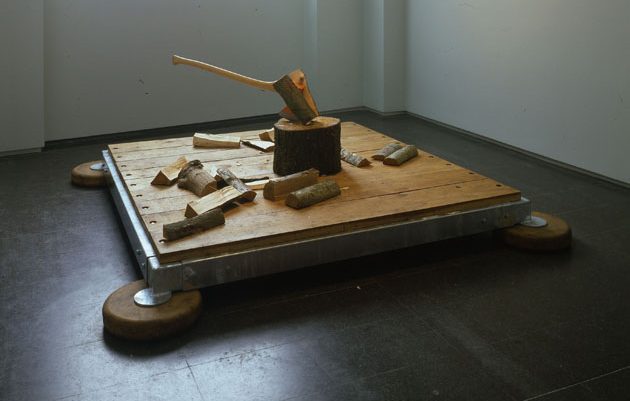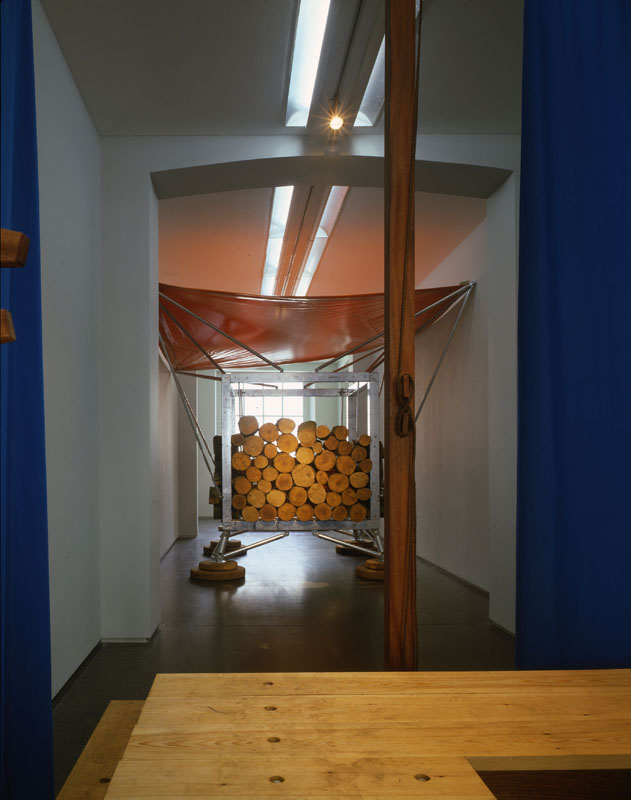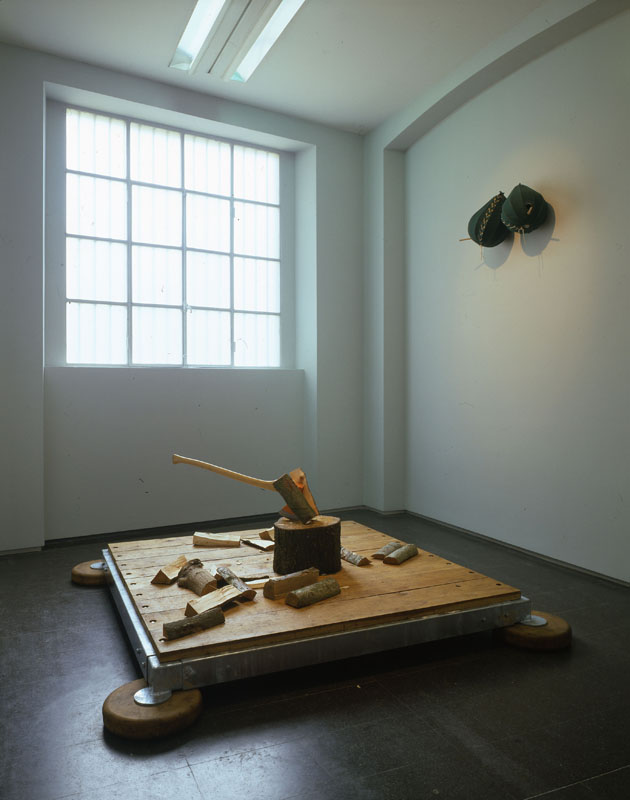Following the exhibition held in November 2001 at its Naples gallery, the Lia Rumma Gallery is pleased to present two new works by the Dutch artist Dré Wapenaar, designed expressly for the Milan Gallery and which form part of the Cycle to the madness of life. In this new series of works, the artist tries to describe “our experience with the endless cycle of life, termed the ‘Lemniscaat’”.
The ‘Lemniscaat’ is the symbol of infinity introduced by the mathematician Bernoulli; it is also the title of a work by the Dutch composer Simeon ten Holt, for which Dré Wapenaar designed and planned his Fourgrandpianopavilion; for the last three years, the construction has hosted a summer music festival of which Wapenaar is one of the organisers and promoters. In the two works on display in the gallery, the “description” of our experience of life cycles is portrayed as a contrast through the “accumulation of energy” – in the Lumberjackspavilion - as opposed to “the apparent absence of energy” – in the Pavilion of emptiness. The Pavilion of emptiness - the small version - is constructed on the model of oriental architecture, combining 3 mahogany platforms - which stand at different heights from the ground, encouraging the visitor to climb to the highest level to perceive the “emptiness” – with a light threefold horizontal structure supported by six vertical posts.
The pavilion space is bounded and protected by blue curtains made from a lightweight fabric which hang down from the structure. By contrast, the second work presented at the exhibition, the Lumberjackspavilion, consists of a “solid”: the container is built in the form of a “cube” designed for the storage of 2 cubic metres of timber, protected from the weather by a square horizontal sheet stretched within a metal frame and raised from the ground using the typical “spacecraft-style landing legs” customarily used by the artist for his tents. Situated beside a blazing brazier, there is a low platform made of wood and metal, on which there is a stump for cutting the wood. This platform stands in front of the pavilion, which was designed following the artist’s lengthy stay in Naples in 2003. “Functionality and necessity in contrast to an apparent lack of function and necessity”.
Emptiness and solidity, thought and action are juxtaposed and contrasted in this stimulating installation. Dré Wapenaar’s tents and pavilions are “social sculptures” which are free from the contingencies that generally place restrictions on architecture. They therefore manage to preserve intact the purity of architecture in its elemental form, providing an almost literal translation of the “idea” that their form is intended to convey.





